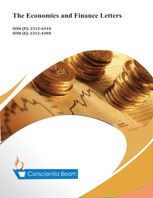Comparing the Financial Performance of Islamic Banks in 10 Countries: New Evidence using Entropy and WASPAS Methods
DOI:
https://doi.org/10.18488/29.v9i2.3110Abstract
This research aims to determine the most crucial financial performance indicators for Islamic banks and to rank Islamic countries according to their financial performance. In line with the purpose of the research, entropy and Weighted Aggregated Sum Product Assessment (WASPAS) methods were used to examine 10 selected Islamic countries (Turkey, Malaysia, Bangladesh, Indonesia, Jordan, Kuwait, Nigeria, Oman, Pakistan, and the UAE) using annual data for the 2013–2020 period. The results of the entropy method showed that the financial performance of Islamic banking is mostly affected by the net non-performing loans ratio and profitability ratios. The results of the WASPAS method indicated that the country with the highest financial performance was Bangladesh. It was followed by Jordan, Turkey, Pakistan, the United Arab Emirates (UAE), Malaysia, Indonesia, Kuwait, and Nigeria, respectively. The lowest financial performance was that of Oman. A low non-performing loan ratio leads to higher financial performance and is of greater importance than profitability ratios, as expected. This study offers a way for the managers of Islamic banks to enhance their financial performance by determining effective financial performance indicators. It also reveals the differences among the selected Islamic countries in terms of financial ratios. The research represents a preliminary study that provides evidence for a selected country group using entropy and WASPAS methods.

